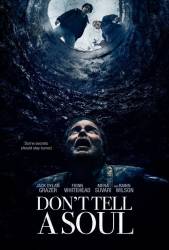Continuity mistake: When Hamby is removing the tarp covering the garage entrance (in lieu of a door), Joey and the truck are about flush with the entrance. Then the (parked) truck is sometimes protruding out about two feet and Joey is on the porch. Other times, Joey is leaning against the interior wall of the garage near the entrance. (01:03:38)
Continuity mistake: Running away from the guard after the burglary, Joey and Matt went down a fairly steep hill in the woods. After passing the hole, they walked up a small embankment to go toward home. The next morning, Joey is riding his bike down a steep hill (the one that was before the hole?) - so steep he has to get off his bike and push it. Halfway down, the camera shifts and Joey is suddenly on TOP of a small embankment, which appears to be the one he and Matt walked up the day before on their way home.
Continuity mistake: The string of lights from outside the garage to inside are more or less visible (number of loops and whether they go very far into the garage) and the intensity and size of the lights are inconsistent. (01:03:40)
Continuity mistake: Before the shoot out with police, Hamby's face was not very dirty when he got out of his truck, but it looked much dirtier a minute later. There are additional places near the end when the amount of dirt on his face varies. (01:06:02 - 01:07:00)





